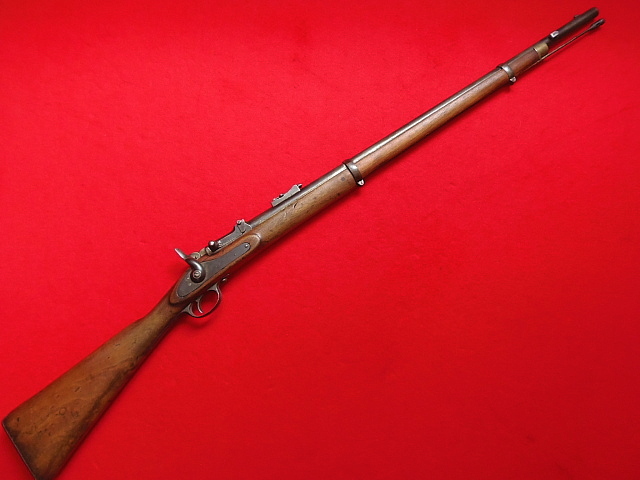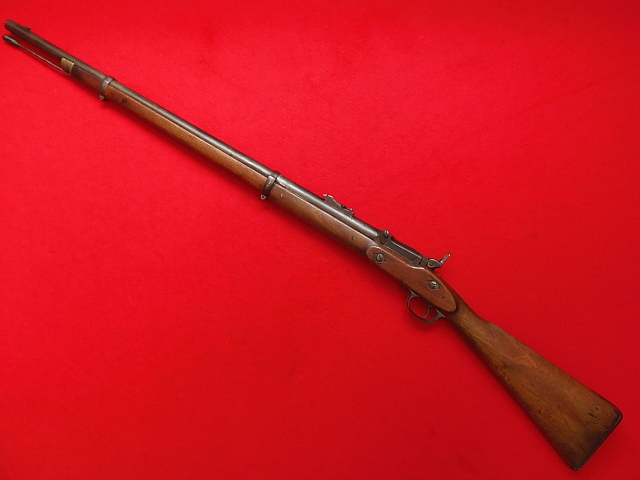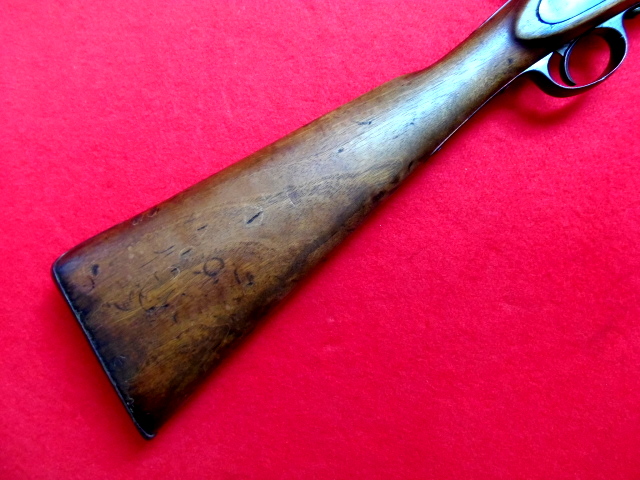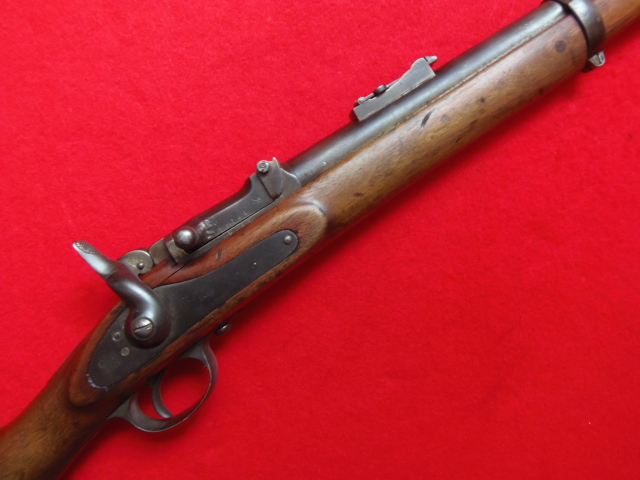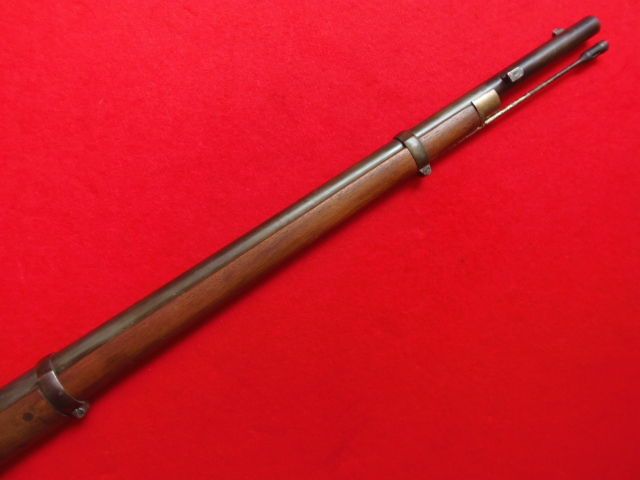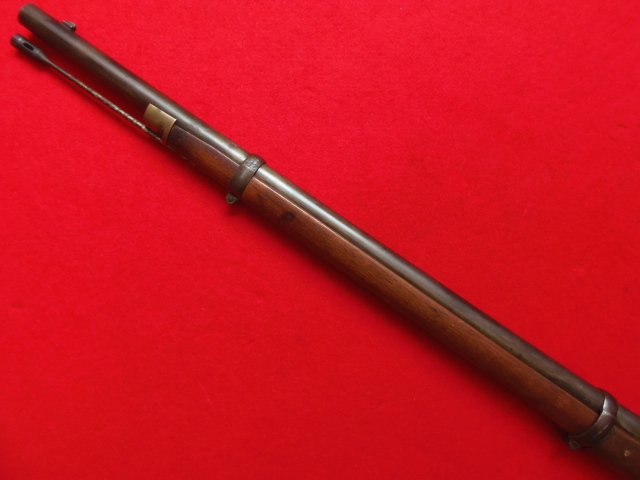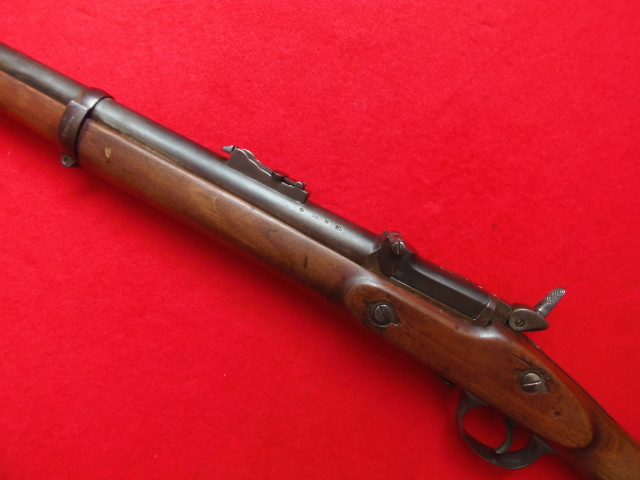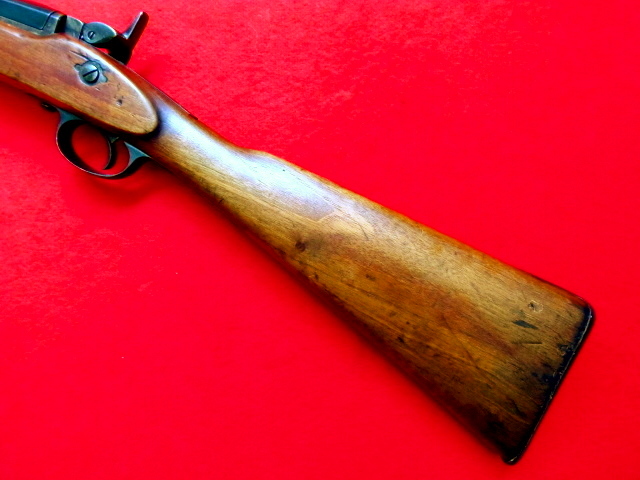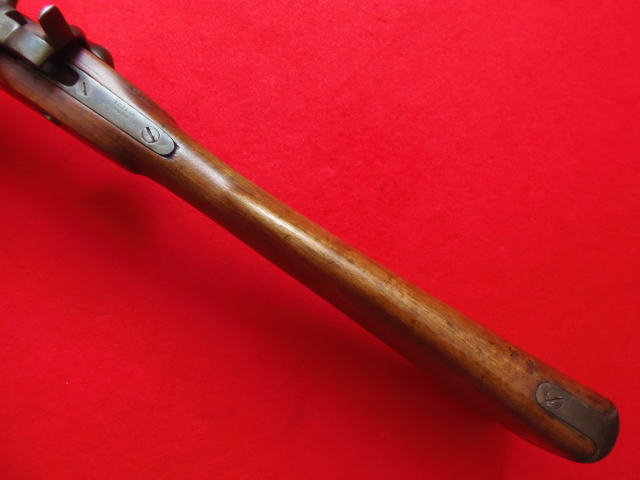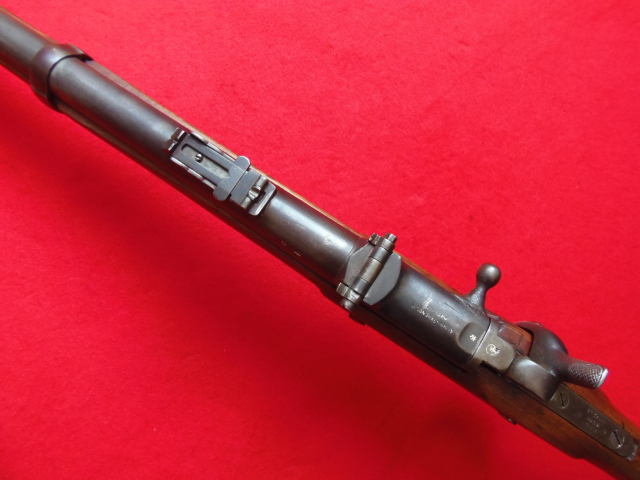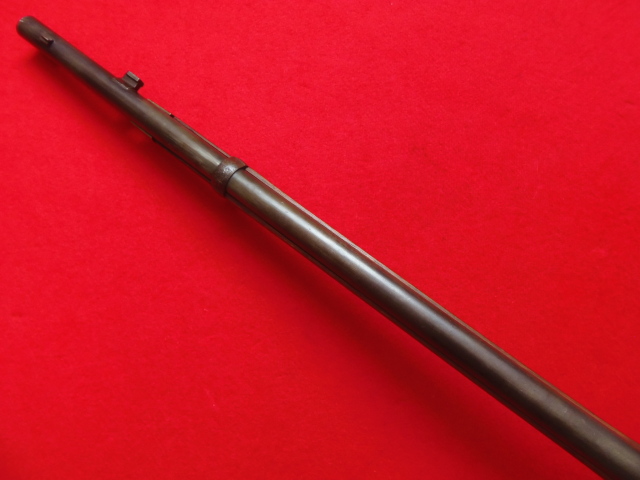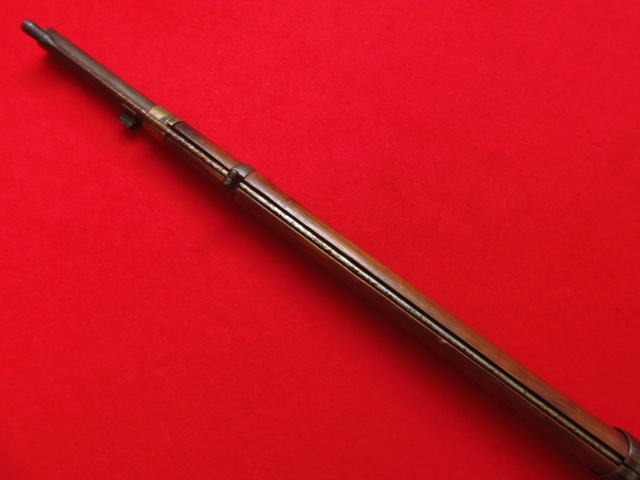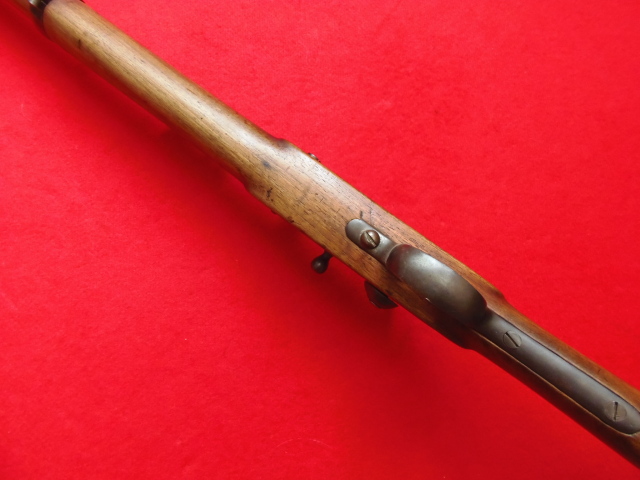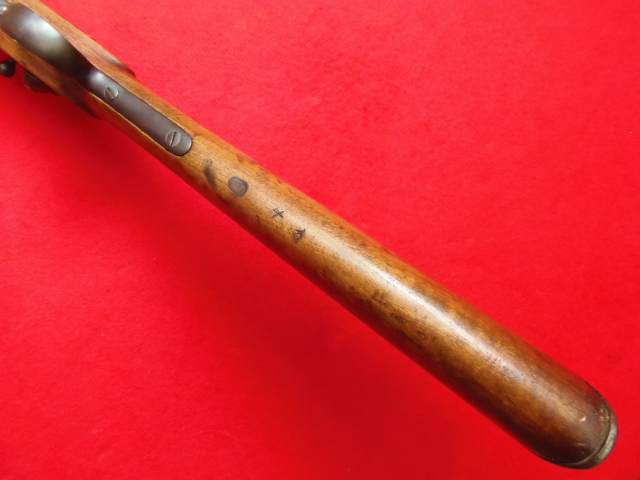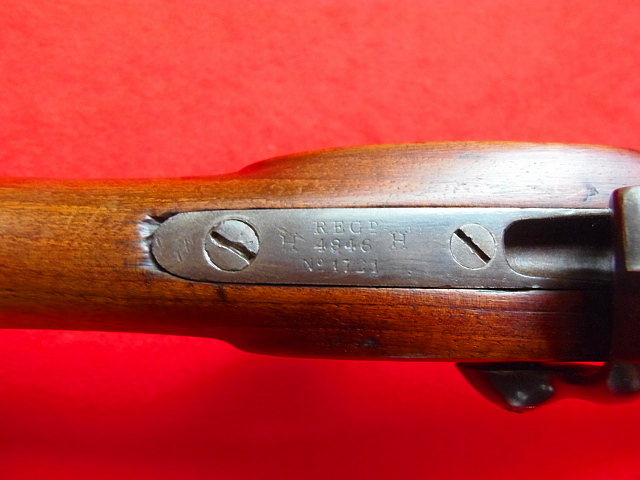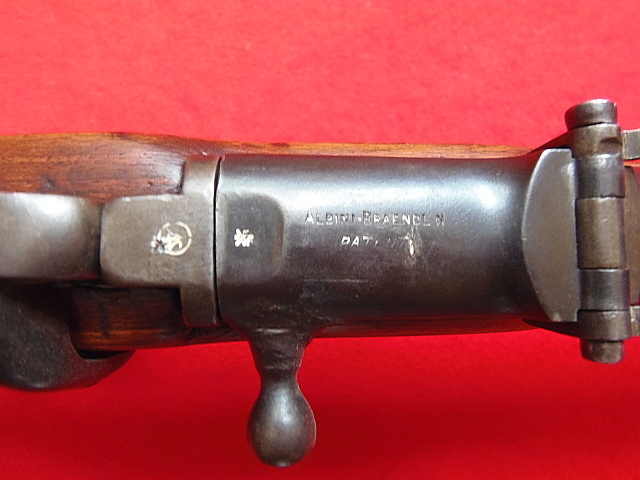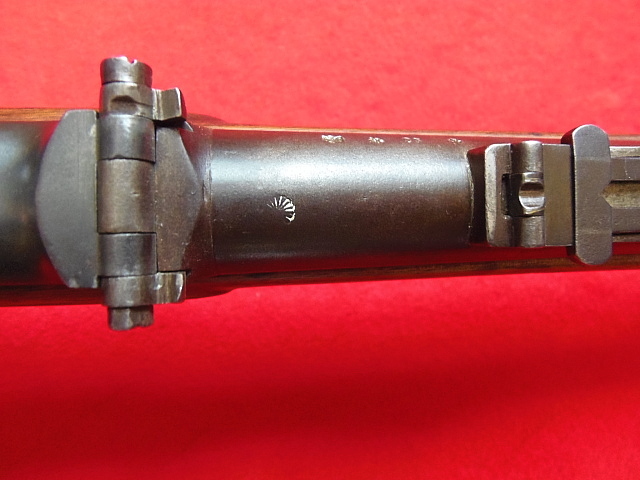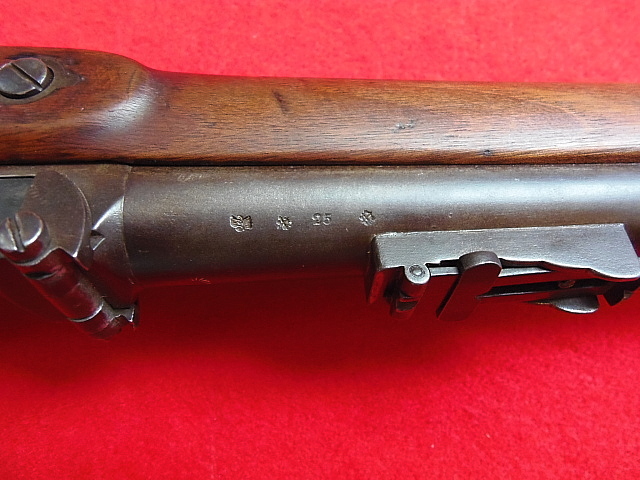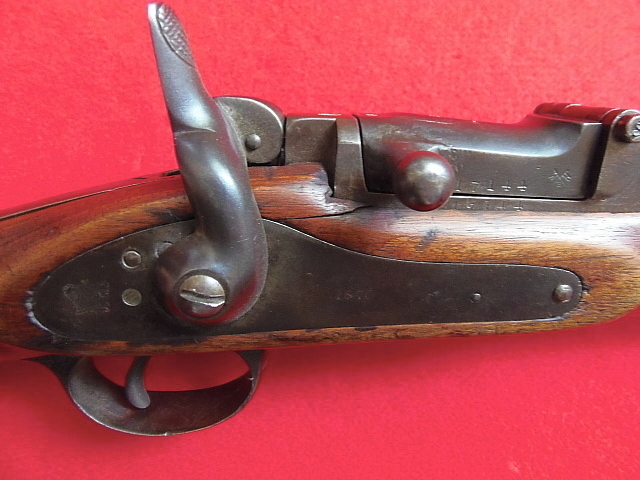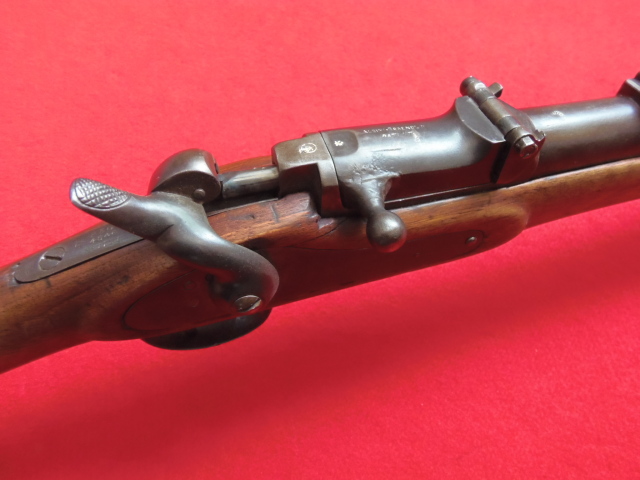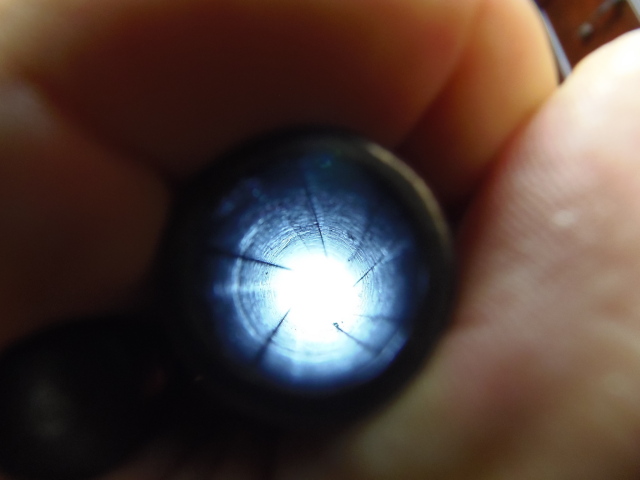Very scarce Japanese issue Albini-Braendlin M.1868 rifle. This is an early breech loader converted from a percussion rifle. The rifle utilizes the breech with a locking bolt attached to the hammer-body. Royal Crown and a date, "1870" are present on the lock plate. The breech displays, "Albini-Braendlin Patent" markings. The right side of the breech displays Braendlin markings, "Two Pennants over B". There are also numerous other English markings on metal parts. The Imperial Chrysanthemum is still present on the chamber. Kanji and some other Japanese characters are stamped on the back of the receiver (please, see pictures). There is a fading cartouche stamped on the right side of the buttstock. Matching serial numbers are stamped on the breech mechanism, receiver and barrel. No serial numbers are present on all the remaining parts of the rifle, which is correct for this model. Correct style steel buttplate without a trap. Steel trigger guard and brass nosecap. Steel barrel rifled with five grooves. Correct military adjustable rear sights. Two barrel bands. The rifle has no sling swivels. Complete with an original cleaning rod. Overall length: 49 inch. Barrel length: 30.5 inch. CONDITION: Overall, in NRA antique low fine condition. 68% of blue turning to brownish color is still on metal. The balance is in white mixed with brown patina. The blue finish was most likely added when the rifle was converted to a breech loader. Some pitting on the barrel along the stock lines. The breech mechanism handle was crudely rewelded long time ago. The stock is smooth, with some handling marks, dings and one small crack above lock plate. Some wear to wood near the nosecap. Bore is in excellent condition, with strong and shiny rifling. Mechanically, the rifle is in fine condition as well, with crisp, strong action. All the internal parts of the rifle are in very good to fine condition, with no visible wear. All the markings and numbers on metal are clearly visible. Scarce Japanese Albini-Braendlin rifle! (Ref. "Military Rifles of Japan" , by Hunnycutt and Anthony, p.17).



